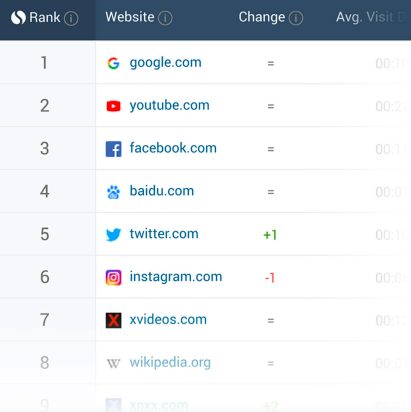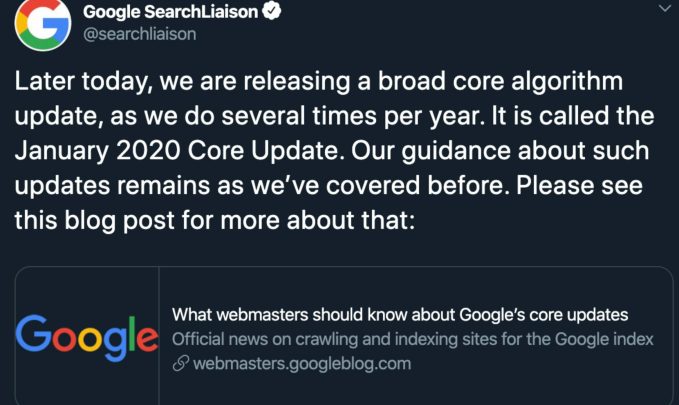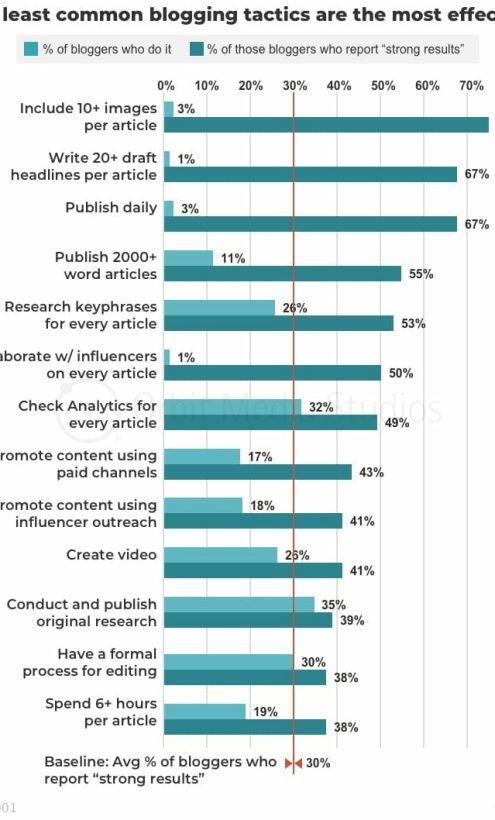By now, most of us have shaken off the fog of the holidays and are really leaning into what we want to make out of this year.
If you’re ready to buckle down and break your own records, this roundup is for you. Almost every item here points you to something you can upgrade, tweak, or optimize in your current campaigns—right now.
It begins with a beefy set of guides. They’ll teach you how to write superior outreach emails, how to scale organic traffic (but not with blog posts), how to launch content market campaigns without missing a detail, and how NLP is changing everything.
After that, our case studies will give you an in-depth look at the state of your Affiliate SERPs in 2020, how your blogging needs to evolve and whether LSI keywords work the way you’ve been told they do.
Finally, don’t miss the top SEO headlines of the last month. There are new changes to snippets, odd traffic trends around the massive Forbes website, and a report that Google is backtracking on its desktop search results redesign.
There’s plenty to get to, so let’s dive right in. First, how much do you think you could increase your outreach with just a simple ****?
Increase your Outreach Conversions 67% with this Simple ****
https://authority.builders/blog/improve-outreach-conversions
It’s possible to set up your blog outreach emails in a way that makes your targets leap at them. It’s not hard, and I’m not asking you to take my word for the kind of results this method gets.
You can find the data right there in the article.
The premise is simple.
You can increase your outreach conversions by more than 65% by pitching only titles that your target wants.
Figuring out what content is irresistible to your target may not be as hard as you think. The guide breaks it down into three steps.
- Identify their weaker competitors
- Research their content gaps
- Show them the gap and pitch them the content they’re missing (for free, even)
It gets a little more complicated than that, but each step is well-explained in the article. In cases where tools are used, you’ll see screen captures so you’ll know where to go to find the data you need.
The end result of following these steps is that you can reach out to a target with the content they’ve been craving. Once you get this process, it’s easy to delegate to an outreach team.
While you’ve still got writing strategies on your mind, let’s look at Backlinko’s ideas for how you can do better at content marketing in 2020.
Backlinko’s Guide to Content Marketing in 2020
https://backlinko.com/content-marketing-this-year
Backlinko’s guide to content marketing in 2020 is one of the largest you’re going to find, but let’s look at whether it’s the one you’ve been waiting for.
The content includes seven beefy chapters that are unusually specific in their conclusions. They are:
- Double Down on Video Content
- Promote With Email
- Publish “Be The Source” Posts
- Get Engagement (and Reach) on LinkedIn
- Create More Epic Content
- Jump On Emerging Topics
- Content Repurposing 2.0
- Content Marketing Tactics for 2020
Some of these changes are going to require large budgets and risky bets. Backlinko makes the case (in this chapter and others) that there is a ton of data that supports the changes. For one…
YouTube is now the largest website on earth after Google. Facebook and Instagram have also focused heavily on expanding video technologies.
Other trends are used to make the case that future content marketing is going to require you to blaze trails. That could mean new perspectives that haven’t been covered, focus on “big” ideas and powerful conclusions, and continue heavily repurposing (if you haven’t started already).
All worth a try, but you have to admit it’s pretty bold to release the “2020 definitive guide” in January. We’ll see how powerful its predictive power is pretty soon.
If you’re in the mood to think about the future of content, you’ll also want to learn what the next guide can teach you about “natural language processing”, or NLP.
How Is NLP Changing The Way We do On-Page SEO in 2020?
https://surferseo.com/blog/nlp-on-page-seo-2020
Natural Language Processing is a big trend in SEO, and this guide focuses on how you may be able to make your content ready.
While theoretical in some places, the advice here is based on some solid communications from Google. When BERT landed, it’s role as Google described it was to “improv(e) language understanding, particularly for more natural language/conversational queries”.
A rough way to understand it is that NLP is the methodology that created the standards BERT uses to determine context and learn new context.
Is it possible to “optimize” for NLP? Perhaps… and the guide section focuses on some of the ways that you can look at your own standards and optimize them for the future.
Mainly, the argument is that you need to focus on the areas where you have control of your website’s structure, the quality of your articles, and the links that are coming and going.
The rollout of BERT represents a serious enhancement in the ability of AI to determine the legitimacy of “related” content, including what tone the content takes toward its subject. It’s a call to action for everyone to run a tighter ship.
Tighter procedures can be a particular challenge when you’re trying to scale up, but CXL claims to have a fresh theory for how to do that without creating a ton of carefully-prepped blog posts.
“How to Scale Organic Traffic (Without Writing a Million Blog Posts)”
https://cxl.com/blog/scale-organic-traffic/
This guide makes the case that you can do that you can seize traffic by creating new products—as long as you have the budget to justify it.
The argument made here is that some sites (Quora is the example used here) have managed most of their growth in recent years not by competing for terms, but by expanding their features to create compelling new destinations on their site that drive new traffic.
Features can be a massive driver of new traffic, and this guide illustrates how you can:
- brainstorm product features;
- narrow your list of potential features;
- deploying those new features in an SEO-friendly way
The guide goes deeply into steps you can take to make new features that can meet those standards. It even includes some closing advice on how you can make a case for new product features to your clients.
Not everyone is going to have the budget for a solution at this scale, but the companies that are facing stagnation across a slate of terms are sometimes the ones with 6-figure budgets. Going bold could certainly work out for them.
If you’re ready for some more data, you’re ready to jump into this month’s rich collection of case studies. First, we’ll look at how affiliate sites are behaving in SERPs and examine the question of whether general sites are dominating niche ones.
Affiliate SERPs in 2020: A Detailed, 1,000 Keyword Analysis
https://detailed.com/affiliate-serps
This study began with a look at the rankings of 1000 affiliate-populated keywords. The idea was to determine (based on some odd readings) whether general sites have started to outperform hyper niche sites for the same terms.
Those odd readings included the fact that publishers like Business Insider were snatching up top spots for certain products like toasters.
The team picked a slate of affiliate marketing keyphrases including:
- Best electric toothbrush
- Budget GPU reviews
- Best portable AC
The terms were searched, and more than 2000 websites were sorted by hand to determine whether they fit into one of several categories including:
- General review sites
- Niche affiliate sites
- Hyperniche affiliate site
- Social media
- SEO agencies
While the experiment began with the question of whether niche sites were losing ground, that didn’t seem to be the conclusion of the data generated.
In the end, (compared to general review sites), hyper niche sites caught the first place spot 33% more of the time. Additionally, when a niche site ranked, it was first in 53.4% of cases. eCommerce sites didn’t fare as well. When they managed to get a spot on page one, it ranked first just 1.7% of the time.
There are arguments made here that a niche-focused or hyper niche-focused site would make a better investment. However, there are a lot of factors that need to be looked at. For example, there can be a huge disparity in size or domain authority between two results.
Another factor that should be looked at is how much work these sites put toward creating competitive content. Our next item is going to cover how bloggers feel that they’re meeting the latest content standards.
[New Research] How Has Blogging Changed? 5 Years of Blogging Statistics, Data and Trends
https://www.orbitmedia.com/blog/blogging-statistics/
This poll of 1000 bloggers looks at how the business of creating blog content has changed in the last five years.
The polls covers a lot of different questions, including how long people are spending on writing blogs, how many images get used, how often keyword research is part of the equation, and how often publishing happens.
A lot of the answers won’t be new, but it’s interesting to look at just how strong and sustained some of these trends are.
To no one’s surprise, blog articles are getting significantly longer.
According to the respondents, the average time to complete a post has jumped from 2 ½ hours to nearly 4.
That extra time accommodates the massive increase in words from an average of around ~800 in 2014 to an average of ~1200 now.
The bloggers who reported the strongest results from their posts preferred a length beyond 2000 words (the longest option in the survey).
Another interesting trend you’ll find is that the vast majority of bloggers (approaching 70%) report that they now make upgrades to older content as a matter of strategy.
Plenty of other data is included that may be of special interest to people in specific niches. How many are working with an editor? How many draft headlines does the average team write? That and plenty more is here.
Next, we have a case study about LSI and Ahref’s argument that they don’t matter in the way that we think they do.
LSI Keywords: What are They and Do They Matter?
https://ahrefs.com/blog/lsi-keywords/
If you believe the following two things about LSI—
- Google uses LSI to index web pages
- LSI keywords in your content help you rank
—then you agree with most SEOs. However, most SEOS might be wrong. That’s the case that Ahrefs is making in this deep look at what LSI really is and how it behaves.
As the article points out, the purpose of LSI is to use complex formulas to determine the relationships between words and phrases from a set of documents and establish context.
Google has clearly gotten better delivering more context-appropriate results in recent years, so what argument could there be that Google isn’t using LSI?
This study uses some credible sources to point out that…
- LSI is an outdated technology that scales badly
- It’s designed to assess a static collection of documents, not a collection that adds and subtracts millions of documents a day
- Google was already making strides on understanding context five years before the LSI patent expired
So, LSI doesn’t matter? That may be, but it’s important to point out this conclusion honestly doesn’t change much when it comes to optimization.
Context still matters. Using natural language for your niche still matters. Google just (might be) using a different technology to pull it off.
That’s the last of the guides. Now, let’s jump to the hottest headlines for the last month. First, what does it mean that featured snippets can’t be duplicated across a snippet and first page results?
Google: Webpages with Featured Snippets Won’t Appear Twice on Page 1
Snippets have become the focus of yet another significant change for SERPs. From now on, no page can hold both the featured snippet and a page-one result. The change has already been rolled out worldwide and affects 100% of searches.
The snippet is now counted as 1 of the 10 organic results that are displayed on the first page of any search. In searches where more than one snippet occurs, each snippet will count as one of the 10.
The reception has been anxious. A lot of SEOs are concerned about the math that goes into what happens when a snippet is lost, or how results that are pushed to page 2 will be ordered.
It remains to be seen whether trading a 1st-page organic result for the snippet is a trade that sites want to make. Existing “nosnippets” tags that lock pages out of being featured are being discussed as a way to hold the organic listing, but that’s a risky bet to make.
Expect to see more on this issue in the coming months. The next story is also one that’s likely to play out in a big way in the future. Forbes insiders are claiming that their traffic has collapsed.
Did Forbes Google Search Traffic Just Completely Die?
https://www.seroundtable.com/forbes-google-search-traffic-28912.html
Forbes has long been a major force in the online publishing world, but all that may be about to come to an end.
A few days after the January core update landed, sources at Forbes were reporting dizzying traffic losses up to 10x. Though internal data was removed from the original post, the same data should now be showing up on everyone’s traffic tools.
What caused this big change? A lot of people have theories.
One of those theories is that this penalty has been a long time coming. Forbes has a bit of a reputation (one that comes across in the comment section of this story) for low-quality content and a come-one-come-all approach to links.
If all that came back to bite them, it might point to the possibility that Google is more willing than in the past to come down on huge, institutional sites.
This may be bad news for Forbes, as Google can be hard to talk down. However, as the next item shows, they can be moved by some types of public pressure.
Google is backtracking on its controversial desktop search results redesign
Google recently announced that it was making changes to its desktop search results to make them appear more like mobile results.
Shortly after that testing began, though, critics were complaining that the changes went too far. Some accused Google of taking extra steps to make it harder to tell the difference between paid and organic results.
The use of favicons to denote non-ad results (instead of the other way around) drew particular attention from the critics.
Several days later, Google announced that it was rolling back the changes to allow for more testing. An announcement that followed shortly afterwards read…
“…While early tests for desktop were positive, we are always incorporating feedback from our users. We are experimenting with a change to the current desktop favicons, and will continue to iterate on the design over time.”
This doesn’t seem to suggest that critics have really won here, but for the time being, the look of their SERPs is safe.
Got Questions or Comments?
Join the discussion here on Facebook.










